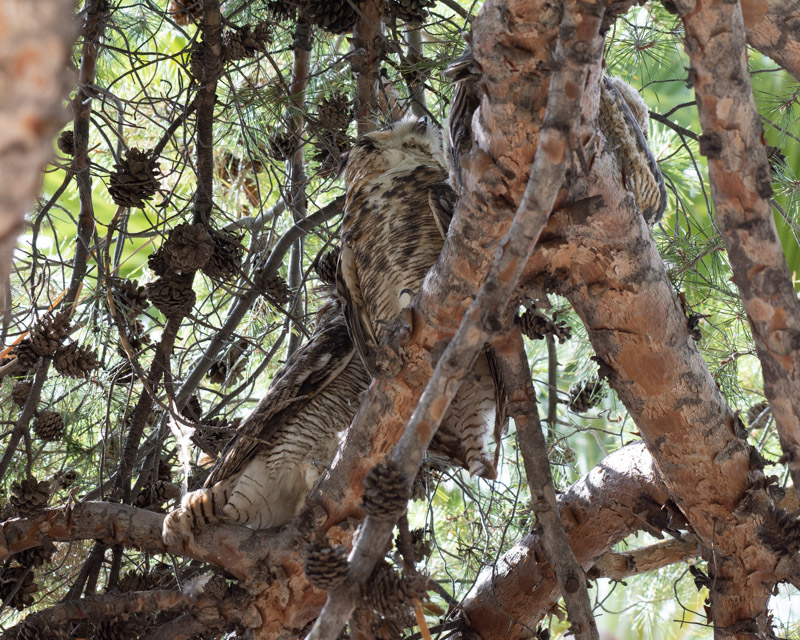By Dan Weisz
Here are some photos of two southern Arizona Owls. The first is not one that is common in the Foothills. It lives in flat grassland, desert, agricultural areas, etc, none of which is describes the Foothills area!! However, these owls are common all around the Tucson area and outskirts. The second owl is one that is common throughout the Foothills. Enjoy!!
It’s nearly impossible to take a bad photo of a Burrowing Owl. They are active during the day and are often found standing outside of their burrows or perched nearby. They have long legs and a flat, rounded head with no ear tufts and their lemon yellow eyes are always expressive. I saw this Marana area family one sunny afternoon. The owl below has some dirt on its yellow bill, the result of recent burrow excavation or renovation.
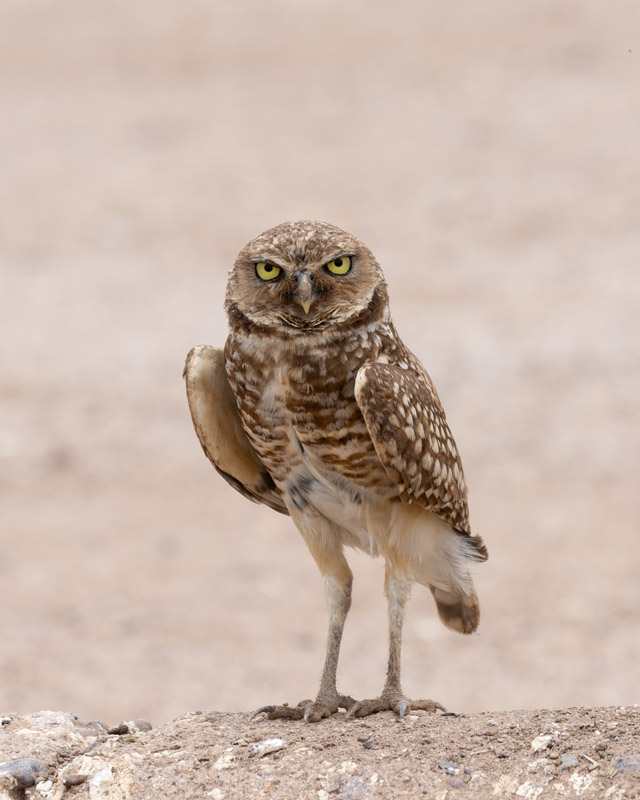
This Burrowing Owl has distinctive white eyebrows. It may have been on the wire to facillitate hunting. Burrowing Owls hunt at all hours of the day and night. Insects are their most common prey although they also eat lizards, rodents, and small birds.

While watching me, this owl slowly stretched its left side, wing and leg. You may have noticed the brood patch on its breast- the part in the feathers in the middle. This bird likely is the female, either sitting on eggs or tending to newly hatched birds. The brood patch is a patch of featherless skin that allows for the birds to transfer heat to their eggs when incubating them.
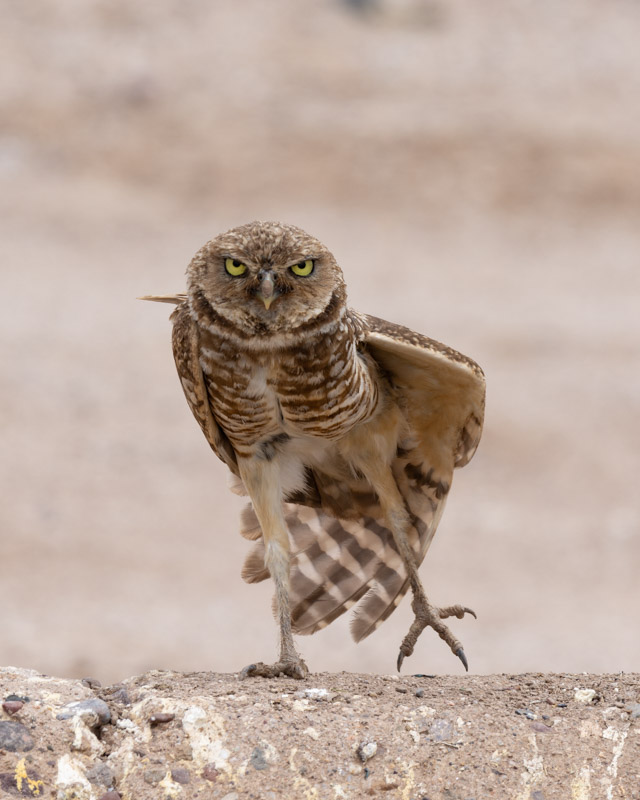
And now the bird on the wire turned around, facing north.
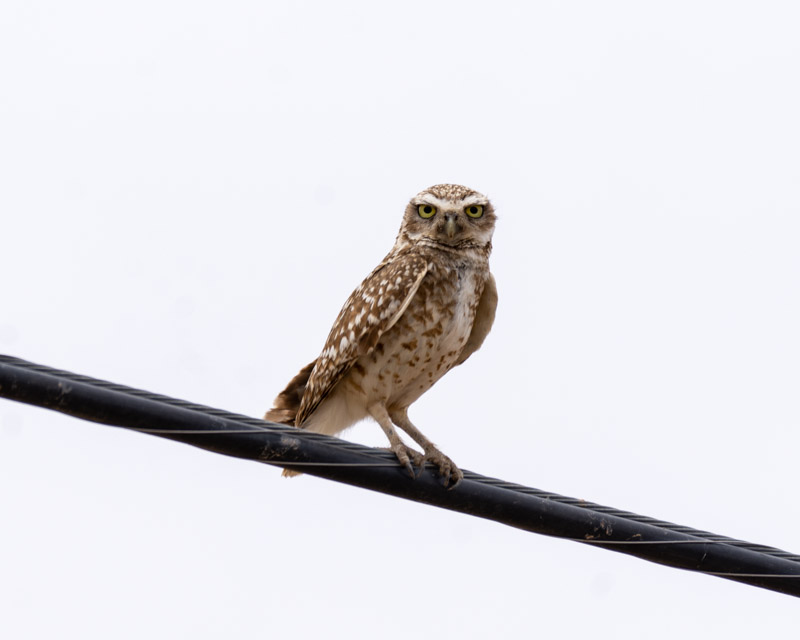
The Burrowing Owl is standing on the edge of a concrete irrigation ditch next to agricultural fields. The burrow is in soft dirt under the ditch, a common place for their burrows. The dirt clod on its beak is very apparent in this profile- it must have spent some time that morning working on the burrow. Burrowing Owls often look directly up into the sky, adding to the many comical poses they demonstrate. Again, the brood patch is very apparent in this shot.
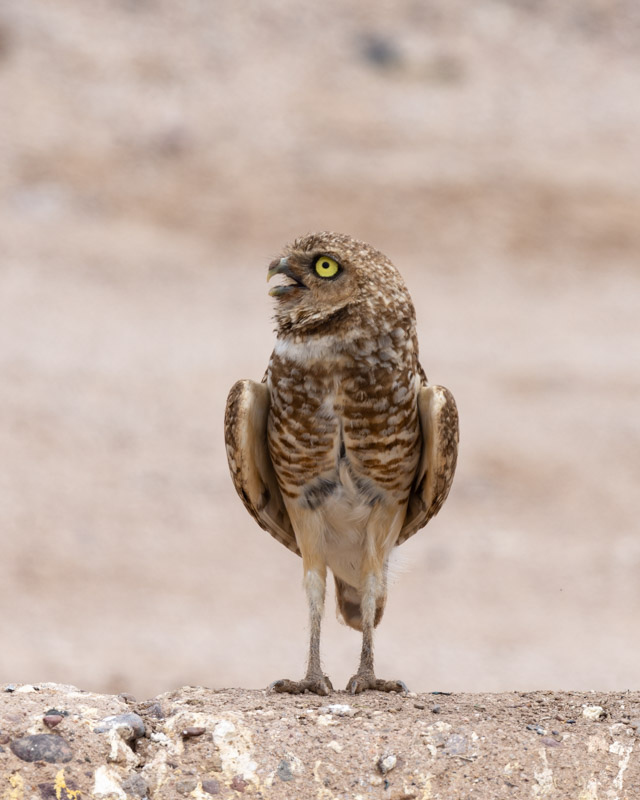
A few weeks ago I shared photos of a very camouflaged Great Horned Owl against the mottled bark of its roost tree. That little owl is now several weeks more mature. After a long search, I spotted in buried in the thick leaves of a nearby pine tree. It spotted me as well and appeared very happy to see me.
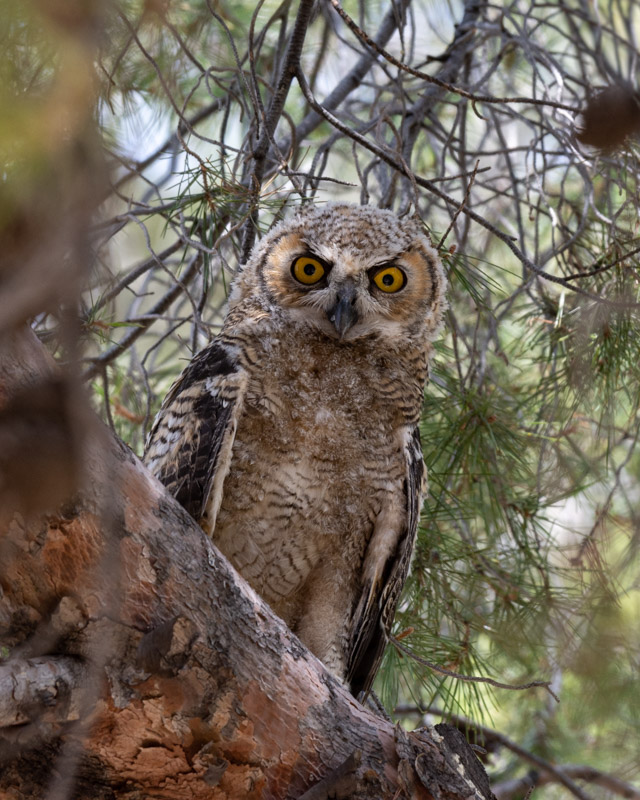
We can only guess what might be going through the owlet’s mind, but it definitely was focused on me while assessing my purpose there.
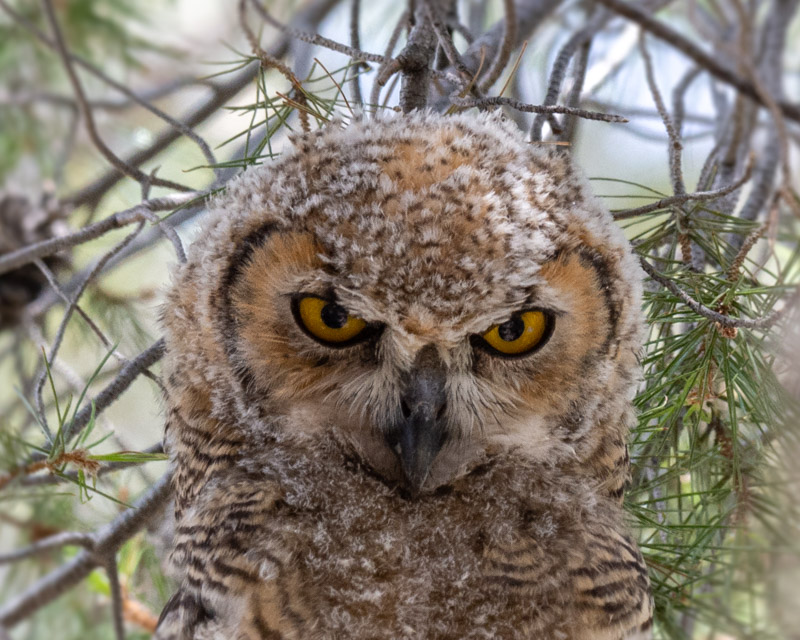
It’s wings were spread to dissipate the summer heat, and it lowered its head for a different angle to observe me from.
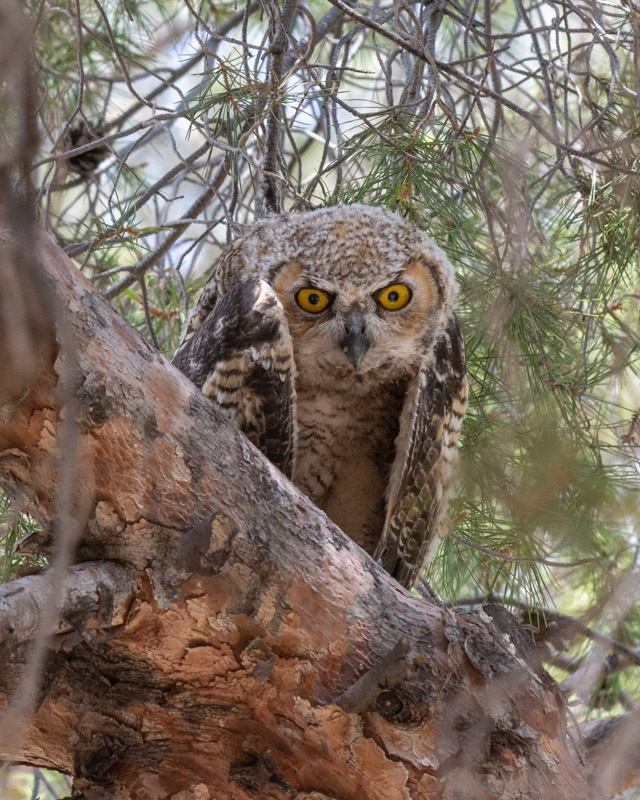
And then went about its business while keeping an eye out for me.
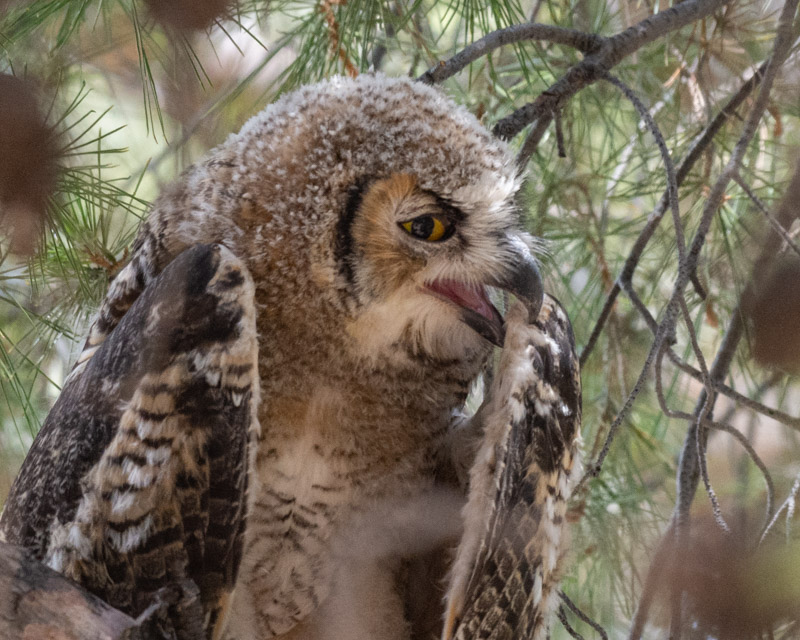
The photo below is not the best but it gives you a sense of the owl’s camouflage within its environment. In this shot, you can see both adults and the young Great Horned Owl. Finding the owlet had been difficult enough for me, taking about ten minutes for me to locate it. I never even noticed the parents perched next to it until the bird walked back up the branch it was perched on. Even then, I had to circle around the tree to find the one spot where I could actually see all three birds at once, practically looking straight up to do so. As I like to say, these birds are able to “hide in plain sight”.
